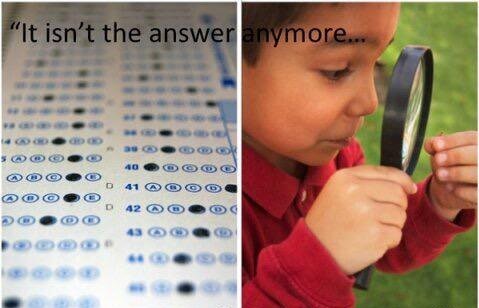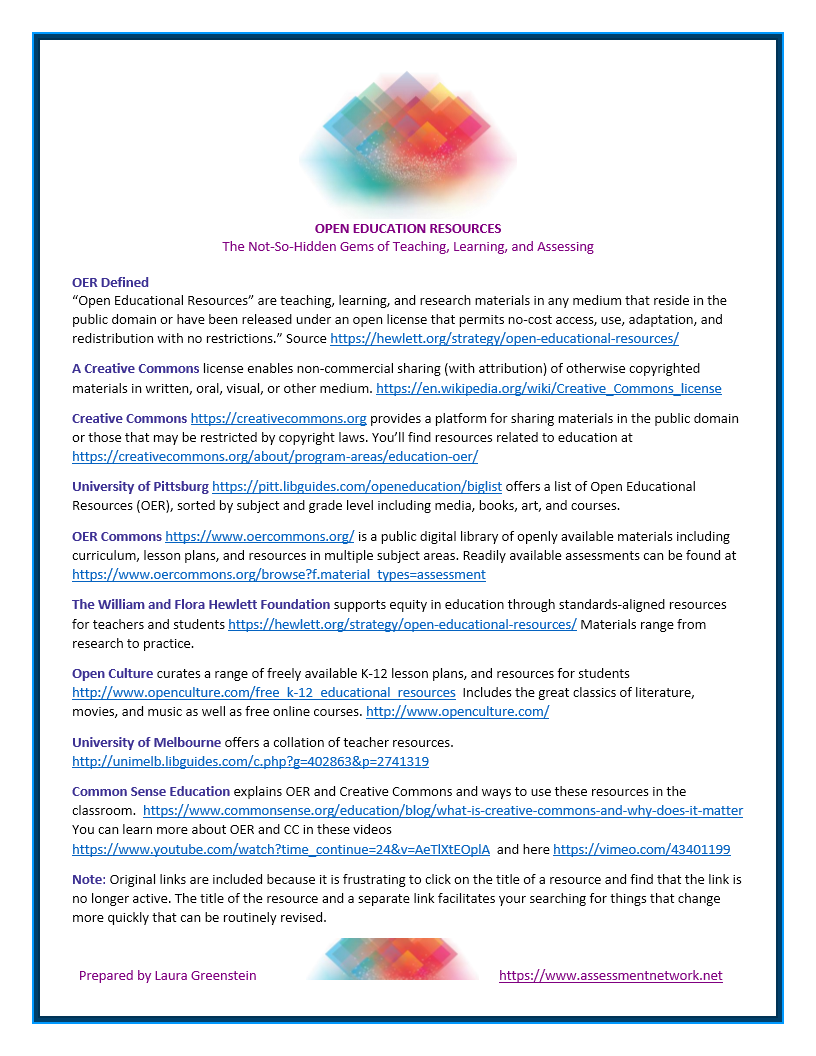MISREPRESENTING ASSESSMENT

Specious Assessment: Misleading, Deceptive, Ambiguous
vs.
Dependable Assessment: Coherent, Balanced, Reasoned
Webster’s dictionary defines specious as having a false look of truth or genuineness or being deceptively attractive. Synonyms include misleading and deceitful. The opposite of specious is aboveboard, forthright, and straightforward.
Down the Rabbit Hole
The idea of assessment being specious began with a reference in a research report on the importance of questioning specious, high stakes, standardized tests. The citation led me to another reading which led me to a report from Dan Hamlin explaining that high standards don’t necessarily mean higher test scores.
And that’s where, as so often happens, I jumped into the rabbit hole and kept digging for more information. This article, from Education Next, explains that state’s proficiency standards have had no effect on test scores.
All of this was brought to the local level in a USA Today story that compared states using data from graduation rates, 8th-grade NAEP scores, and average adult incomes. Honestly, there were few surprises on the list, with states in the northeast scoring the highest, and southern states in general, scoring lower.
Interestingly, some of the lower performing states, also claim higher graduation rates and greater enrollment in higher education. What they don’t explain is the rest of the story, for example, states reliance on scripted lesson plans, adjustments to graduation requirements, and preparation for college.
Assessment can be imbalanced and unreliable OR coherent and dependable
“In education, the term assessment refers to the wide variety of methods or tools that educators use to evaluate, measure, and document the academic readiness, learning progress, skill acquisition, or educational needs of students.” (EdGlossary)
Experts in assessment such as the National Academy Press’ publication, Knowing What Students Know, edited by James Pellegrino, Naomi Chudowsky and Robert Glaser, and other authorities including James H. McMillan, Dylan Wiliam, Linda Darling-Hammond, and Dan Koretz, and organization such as NCIEA, NCME, CRESST have reliably and consistently described the essential elements of effective assessment.
On the other hand, there are blaring headlines trying to persuade us to purchase the perfect program, package, or platform. Or headlines that are just plain scary (I collected these during the past few weeks from educational resources) “Cause for concern,” “Teacher’s grapple with,” and “Future is unclear,”
 Straightforward Realities of Best Practice
Straightforward Realities of Best Practice
Digging deeper into the real world of assessment, rather than idealistic prototypes and commercial persuasion, means looking at assessment from multiple perspectives and considering best practices through multiple lenses: students, teachers, classrooms and school as well as realistic policy and feasible financial considerations.
Here are a few essentials. You can learn more about best practice at the Assessment Network and the resources listed below
ALIGNED With effective and coherent curriculum, learning intentions, and instruction
PURPOSEFUL: Supports learning and encourages improvement in performance
EMBEDDED Throughout teaching and learning, assessment tracks progress and informs the next steps.
COMPREHENSIVE: From large-scale to local, varied, heterogeneous, and multidimensional methods are evident.
RESPONSIVE: Applied Use of information: from immediate responses to long term planning
At the end of the rabbit hole, you’ll find a world where assessment is part of a comprehensive and student-centered, culture of learning.
https://www.nap.edu/read/10019/chapter/10
https://www.nwea.org/blog/2013/five-characteristics-quality-educational-assessments-part-one/









 EACH OF US AS IS, MAL-, MIS-, DYS/DIS- OR ILL-, SOMETHING OR OTHER.
EACH OF US AS IS, MAL-, MIS-, DYS/DIS- OR ILL-, SOMETHING OR OTHER.

